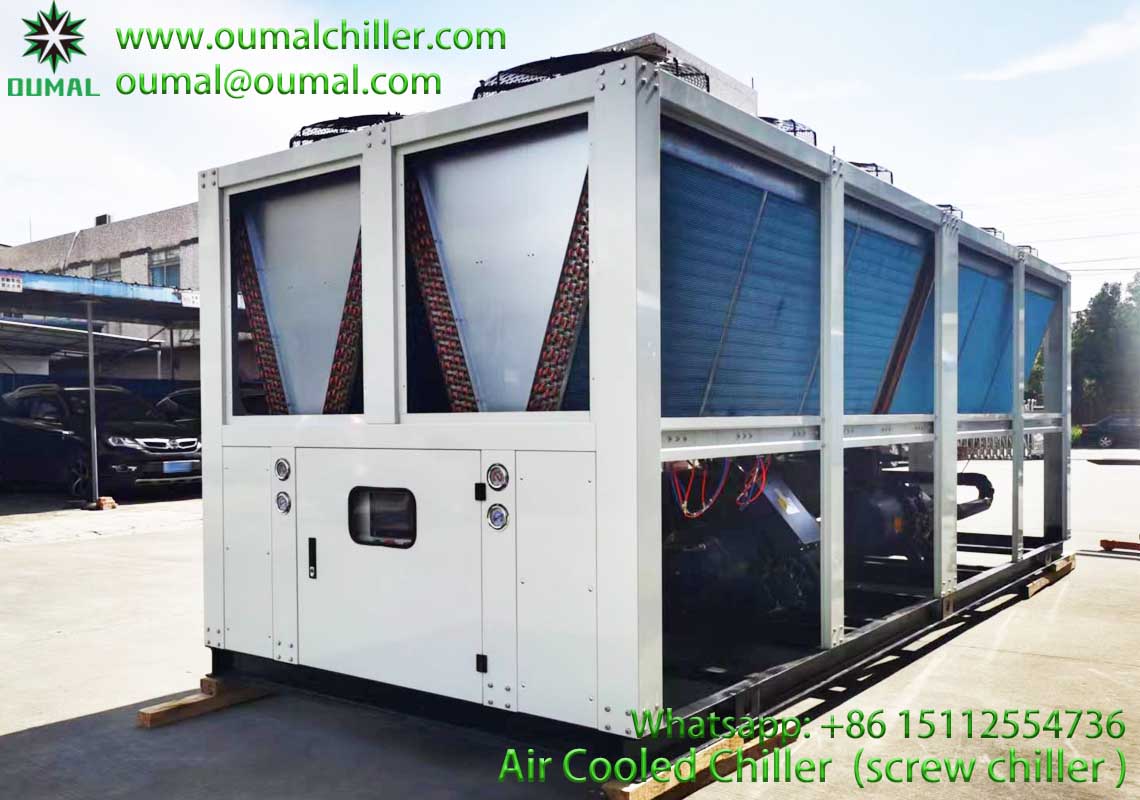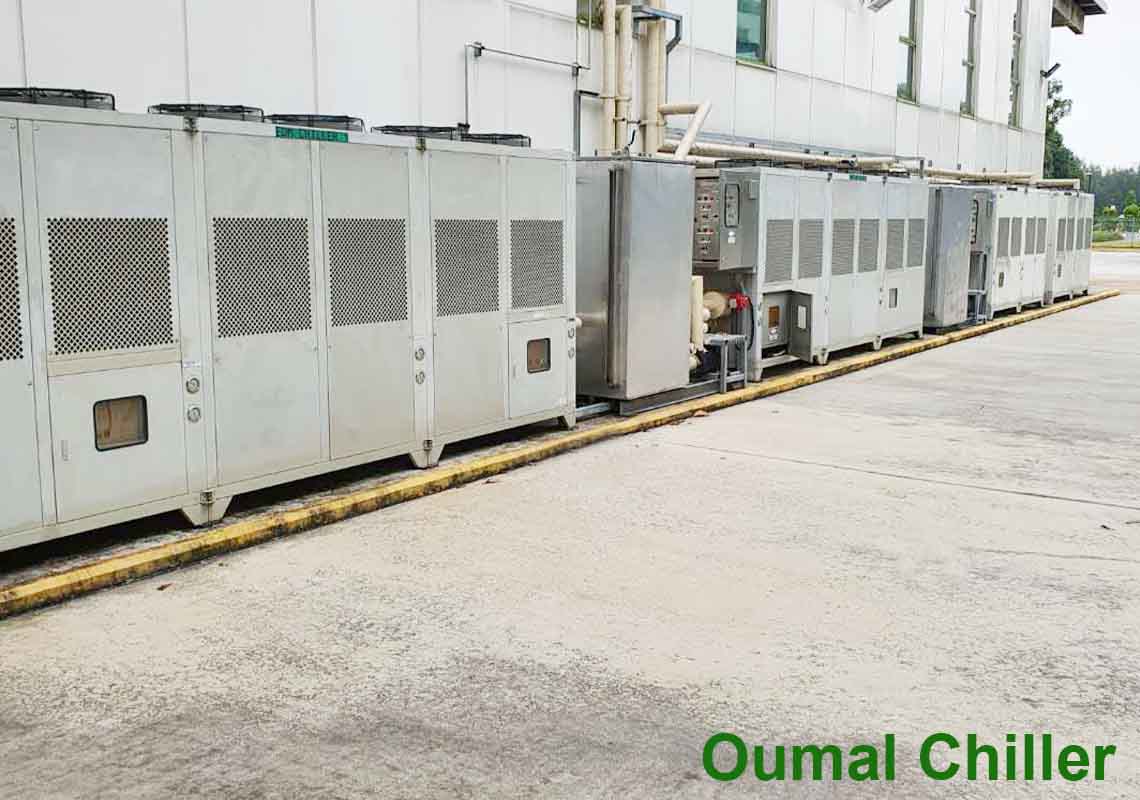After the industrial chiller system has
passed the vacuum test, the vacuum state in the system can be used to charge
the refrigerant.
1. Refrigerant charging
For newly installed systems, refrigerant can be added to the high-pressure end, and the operation method is as follows:
1) Turn on the cooling water system for the condenser, and keep the valve in the system as it was during the vacuum test
2) Connect the steel cylinder containing the refrigerant with the West 14mm×2mm seamless steel pipe (use a red copper pipe when filling with Freon). The mouth of the bottle is inclined downward, and the cylinder is at an angle of 30° with the ground, or the end of the cylinder is raised about 200-300mm.
3) Open the filling valve. When the system reaches a certain pressure (0.1~0.2 MPa for ammonia system; 0.2~0.3 MPa for Freon system), stop charging the refrigerant, and then check the sealing condition of the system at each connection and welding place. If there is no leakage, Can continue to charge refrigerant.
4) Close the outlet valve on the liquid reservoir and continue to charge the refrigerant. When the cylinder pressure and the pressure in the liquid reservoir reach equilibrium, the outlet valve on the liquid reservoir should be opened.
5) Start the refrigerating machine, make the refrigerating device enter the running state, and continue to charge the refrigerant at the same time. When white frost appears on the lower part of the cylinder, it means that the liquid refrigerant in the cylinder is almost completely filled. At this time, the cylinder valve and charging valve can be closed, and the bottle can be changed to continue charging.
6) Unless the outside temperature is very low, it is generally not necessary to pour hot water on the cylinder to increase the pressure in the cylinder when charging the refrigerant, because it is not safe to do so. If you need to speed up the filling speed, the hot water temperature must not exceed 50°C and other methods to heat the cylinder are strictly prohibited.
7) When filling freon, a filter drier must be installed on the special nozzle to reduce the possibility of water entering the system. When charging with high pressure section, never start the compressor, and pay attention to the exhaust valve not to leak, otherwise liquid hammer will occur.
8) When the refrigerant is charged up to 90% of the charging amount, the charging can be temporarily stopped, and the system can be tested to check whether the system dosage has met the operation requirements and avoid unnecessary trouble caused by excessive charging. For the old refrigeration system, when the refrigerant needs to be supplemented, it should be charged from the low pressure side.
2. Leak detection after filling
(1) Leak detection method with test paper Generally, phenolphthalein test paper is used to test the system's welds, flanges, and threaded connections for leaks. Wet the test paper and approach the inspected place. If it turns red, it means that there is ammonia leakage (note that the test paper should not be in contact with the soapy water on the pipe to create an illusion). Litmus paper that turns blue when exposed to ammonia can also be used.
(2) Halogen blowtorch leak detection method Halogen blowtorch is a common tool for leak detection in Freon refrigeration systems. The domestic halogen blowtorch is shown in the figure below, and the method of use is as follows:
1. Add alcohol: first unscrew the base 1 and add anhydrous alcohol with a purity of not less than 99.5% to the inside of the barrel, but the amount of injection should not be too much, just fill 1/2 to 3/4 of the volume of the lamp tube That's it, then the base should be fastened tightly.
2. Light a fire: turn the hand wheel 2 to the right, close the valve core, fill the wine glass, and then light it to heat the lamp tube and the upper part of the blowtorch. After heating a little, check whether the blowtorch is leaking.
3. Fire: When the alcohol in the beaker is nearly finished, turn the hand wheel 2 to the left and ignite the volatilized alcohol in the nozzle in the flame ring 4. At this time, the suction hose 6 of the halogen lamp emits With the sound of gas inhalation, you can start leak detection with a lamp.
4. Use: When testing, move the nozzle of the suction hose 6 close to the inspected place, and move slowly. If there is Freon gas leakage, it will decompose when it meets the flame. At this time, the orange-red flame will turn into green and the color of the flame. The change varies with the amount of Freon leakage, and the darker the color, the more serious the leakage of Freon.


